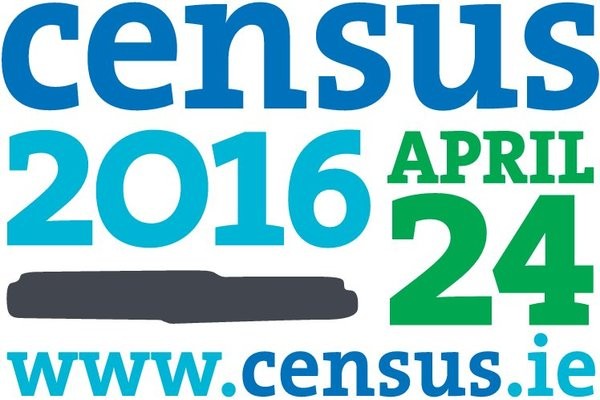
Image provided by Central Statistics Office
On Sunday April 24th, Census 2016 will create a comprehensive picture of the social and living conditions of the people of Ireland in 2016.
The census has several functions within Irish society, the most important of which is providing details of population figures at a local level. These are used to identify likely demands for schools and healthcare facilities, areas of high unemployment and the best locations for new shops.
Current population statistics are needed to plan the provision of healthcare, education and employment, as are regional figures to determine regional policy for the operation of local authorities.
The census is also used to determine the total membership of Dáil Éireann, which is decided based on the population as measured by the census. Once these results are published, the membership of Dáil Éireann is decided by assigning one TD to a maximum of 30,000 people.
Another essential asset of the census is measuring the exact extent of migration, as it is the only means by which this can be done accurately. In the long run, it measures net migration (the difference between inward and outward migration) by comparing the results of successive migrations and counting the number of births and deaths that have taken place over measured period.
The census is organised by dividing the country into 44 designated regions, with each region divided into ten field districts. 4,663 enumerators are then sent across the country to distribute and collect the forms.
It is in the best interest of everyone in Ireland to be included in the census, as it ensures that they have a direct impact on the important decisions that will be made about the future of the country. Involvement begins with the census form being delivered to every home in the 3-4 weeks leading up to census day.
The 30-question form must be completed in a way that makes note of each person in the household, with the head of the household signing the declaration at the bottom of the page to show this. The enumerator will contact them again 2-3 weeks after census day to collect the form, and will be happy to provide help at any time that it is needed.
The Central Statistics Office has printed 2.3 million forms to be used in this year’s census, which is the first since 2011. The population of Ireland at that time was 4,588,252, a significant increase of 348,404 from the previous census in 2006. The 2016 census will be the 27th to take place in the country’s history, with the first one happening back in 1821.
By Kevin Carney



